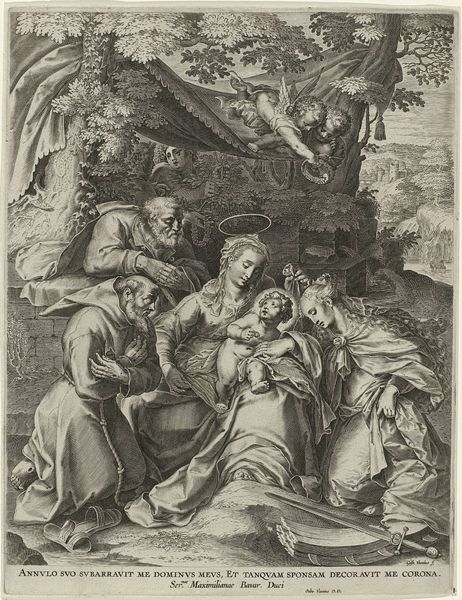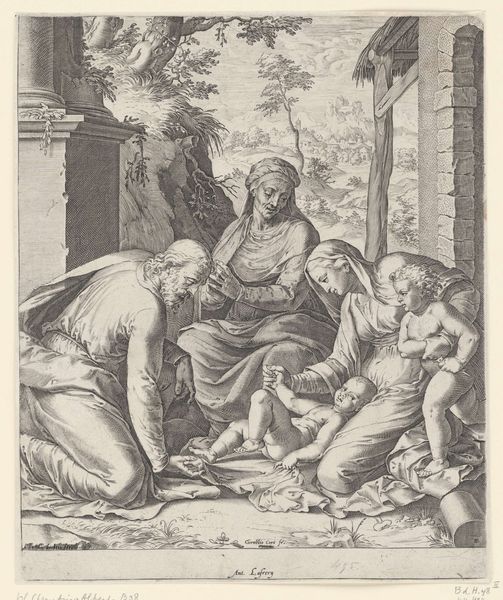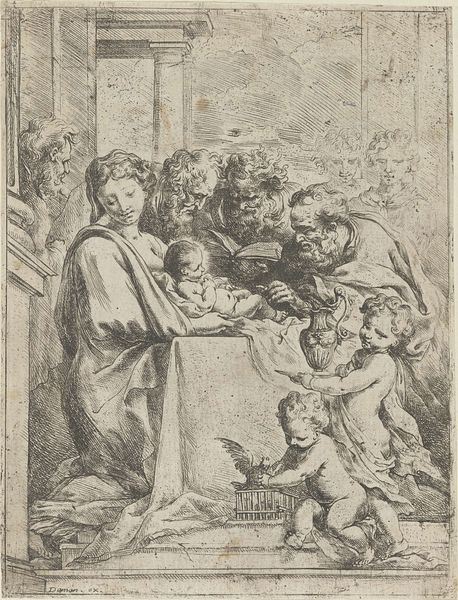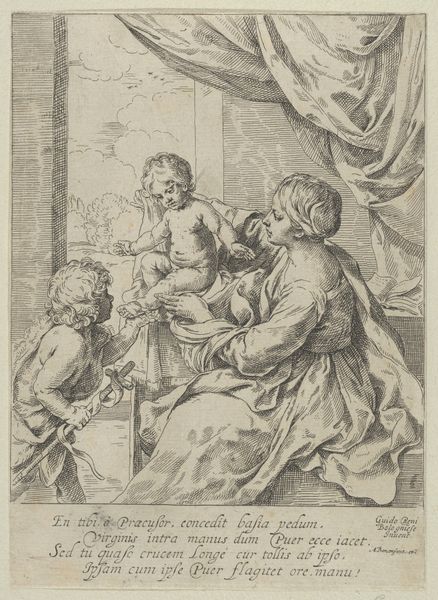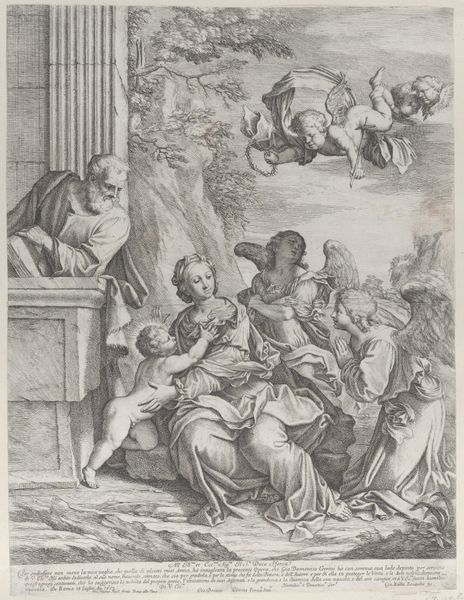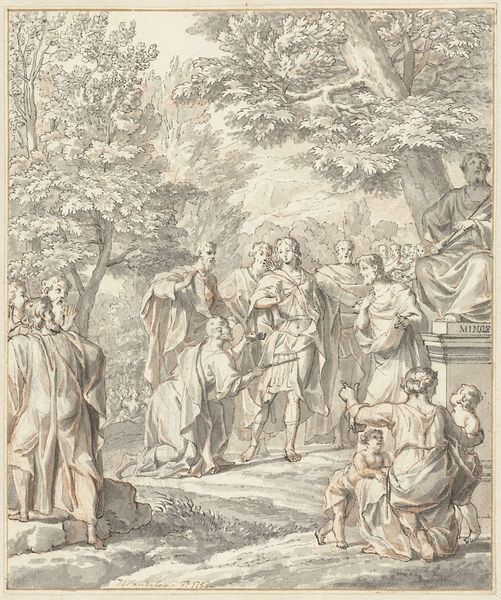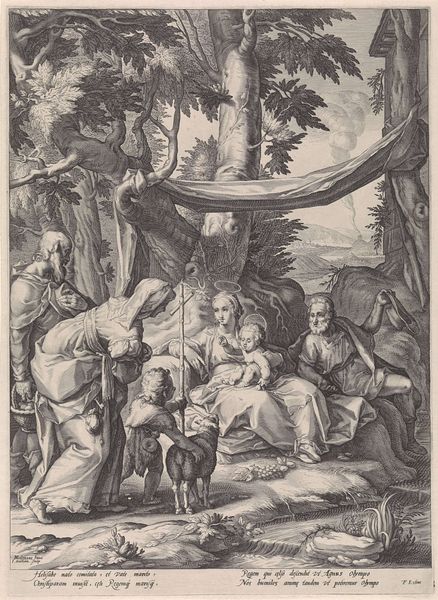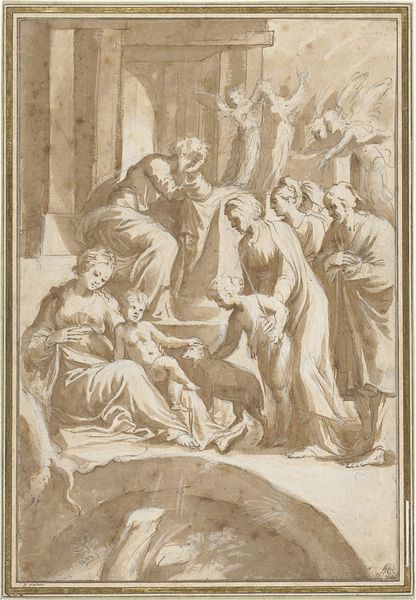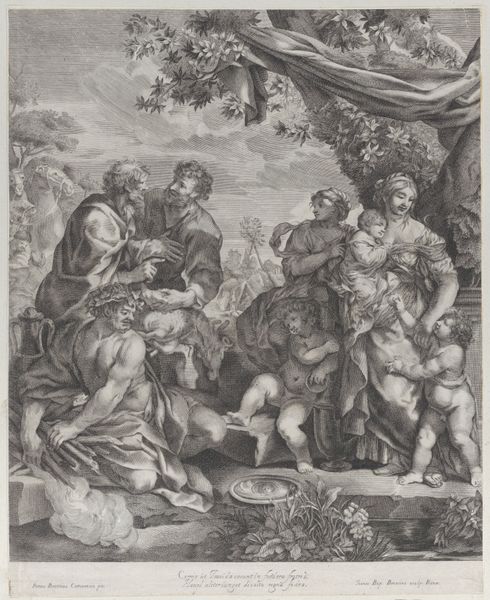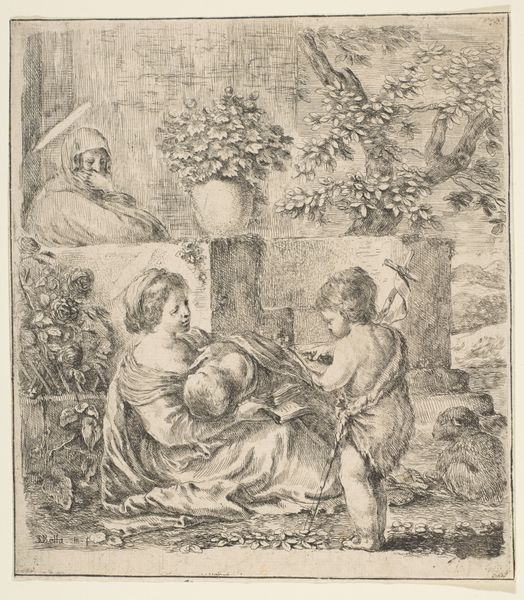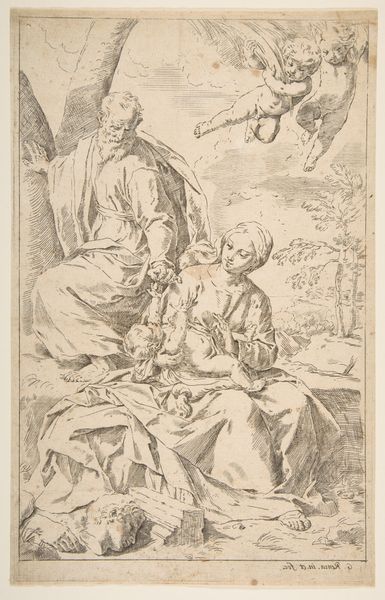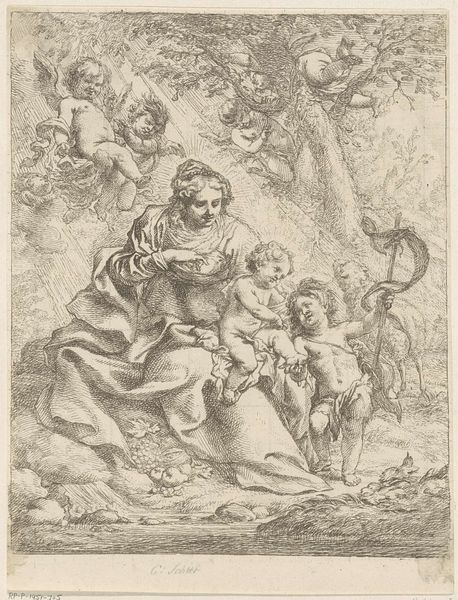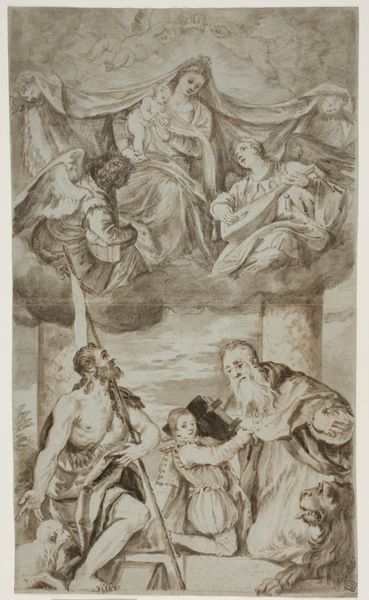
St Margaret of Cortona Kneeling before the Christ Child and Offering Him a Book c. 1640
0:00
0:00
pietrodacortona
Rijksmuseum
drawing, pencil
#
portrait
#
drawing
#
allegory
#
baroque
#
book
#
pencil sketch
#
figuration
#
pencil drawing
#
pencil
#
history-painting
#
academic-art
Dimensions: height 409 mm, width 305 mm
Copyright: Rijks Museum: Open Domain
Editor: This pencil drawing by Pietro da Cortona, made around 1640, depicts Saint Margaret of Cortona kneeling before the Christ Child. There’s almost a dreamlike quality to it. How do you interpret this work? Curator: The drawing reflects the convergence of religious fervor and artistic patronage within the Baroque era. The depiction of St. Margaret, offering a book to Christ, signifies the Church's effort to shape spiritual devotion through literacy and the written word. This visual narrative underscores the politics of imagery, where art becomes a medium for promoting Catholic doctrine, particularly in response to the Protestant Reformation. Editor: I see what you mean. So it's not just a devotional image, it's part of a broader cultural project? Curator: Precisely. Consider where such an image might have been displayed. Was it a preparatory sketch for a larger altarpiece, influencing public worship? Or a study intended for a private collector, reflecting the status and piety of the elite? The context of display profoundly shapes our understanding. Notice how the artist is constructing an "academic" idealized image for its purpose of inspiring faith, through its draftsmanship and refined figures. Editor: That's interesting. I hadn’t considered the location affecting the interpretation so directly. Were images of saints generally used this way? Curator: To a degree, yes. Art during this period was often instrumental in shaping public sentiment and reinforcing social hierarchies, be it explicitly commissioned works, or those selected for exhibition and praise. The very act of representing St. Margaret in such a reverent pose serves to elevate her as a role model. And so, the meaning of this work also becomes situated and constructed depending on its place within Baroque culture. What’s your take now? Editor: It definitely seems a lot more strategic than just "pretty art." Thinking about the setting and intended audience makes the imagery come alive. Curator: Indeed. By analyzing the historical context and societal roles art played at the time, we reveal complex narratives embedded within even the simplest of drawings.
Comments
rijksmuseum about 2 years ago
⋮
The fact that St Margaret also came from Cortona, the artist’s birthplace, may have been the reason why Pietro da Cortona dedicated this sheet to her. Whether the drawing served as a preliminary study for an altarpiece is not known. However, it was later used for a print. The artist was dissatisfied with the original drawing of Margaret’s cape: he pasted a piece of paper over it with an improved version.
Join the conversation
Join millions of artists and users on Artera today and experience the ultimate creative platform.
